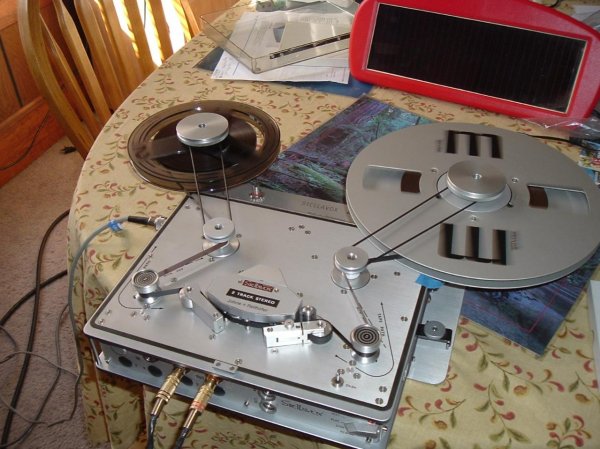that´s ok...Herrn Berner explained the procedure and what tools were needed....
best
Leif
It would help us to learn what Martin had explained to you here so that we would be informed as well.
Ki
that´s ok...Herrn Berner explained the procedure and what tools were needed....
best
Leif
It would help us to learn what Martin had explained to you here so that we would be informed as well.
Ki
and in my opinion this mail kind of "de-mystified" the whole process
and yes they can supply spare circlips....
best
Leif
and in my opinion this mail kind of "de-mystified" the whole process
and yes they can supply spare circlips....
best
Leif
 Started life as a Stellavox Si8, the “i” stood for Instrumentation. To sell more decks, Georges Quellet in collaboration with an appropriate partner took an Sp machine and made it into a discrete, four-channel deck for recording information for instrumentation purposes; like temperature, pressure, weight change, whatever. The information was encoded to digital and recorded as ones and zeroes, using PCM analog to digital converters supplied by the partner. A/D recording electronics and the D/A playback decoding was done in a separate box. Inside the Si was a four channel playback preamplifier (based on the analog SPA/SOA modules in the Sp series) and a programmable equalization filter . Even beefed up the capstan electronics to allow for ½ inch tape! - never seen a machine with 1/2" reels and guides for that tho.
Started life as a Stellavox Si8, the “i” stood for Instrumentation. To sell more decks, Georges Quellet in collaboration with an appropriate partner took an Sp machine and made it into a discrete, four-channel deck for recording information for instrumentation purposes; like temperature, pressure, weight change, whatever. The information was encoded to digital and recorded as ones and zeroes, using PCM analog to digital converters supplied by the partner. A/D recording electronics and the D/A playback decoding was done in a separate box. Inside the Si was a four channel playback preamplifier (based on the analog SPA/SOA modules in the Sp series) and a programmable equalization filter . Even beefed up the capstan electronics to allow for ½ inch tape! - never seen a machine with 1/2" reels and guides for that tho.| Steve Williams Site Founder | Site Owner | Administrator | Ron Resnick Site Owner | Administrator | Julian (The Fixer) Website Build | Marketing Managersing |

